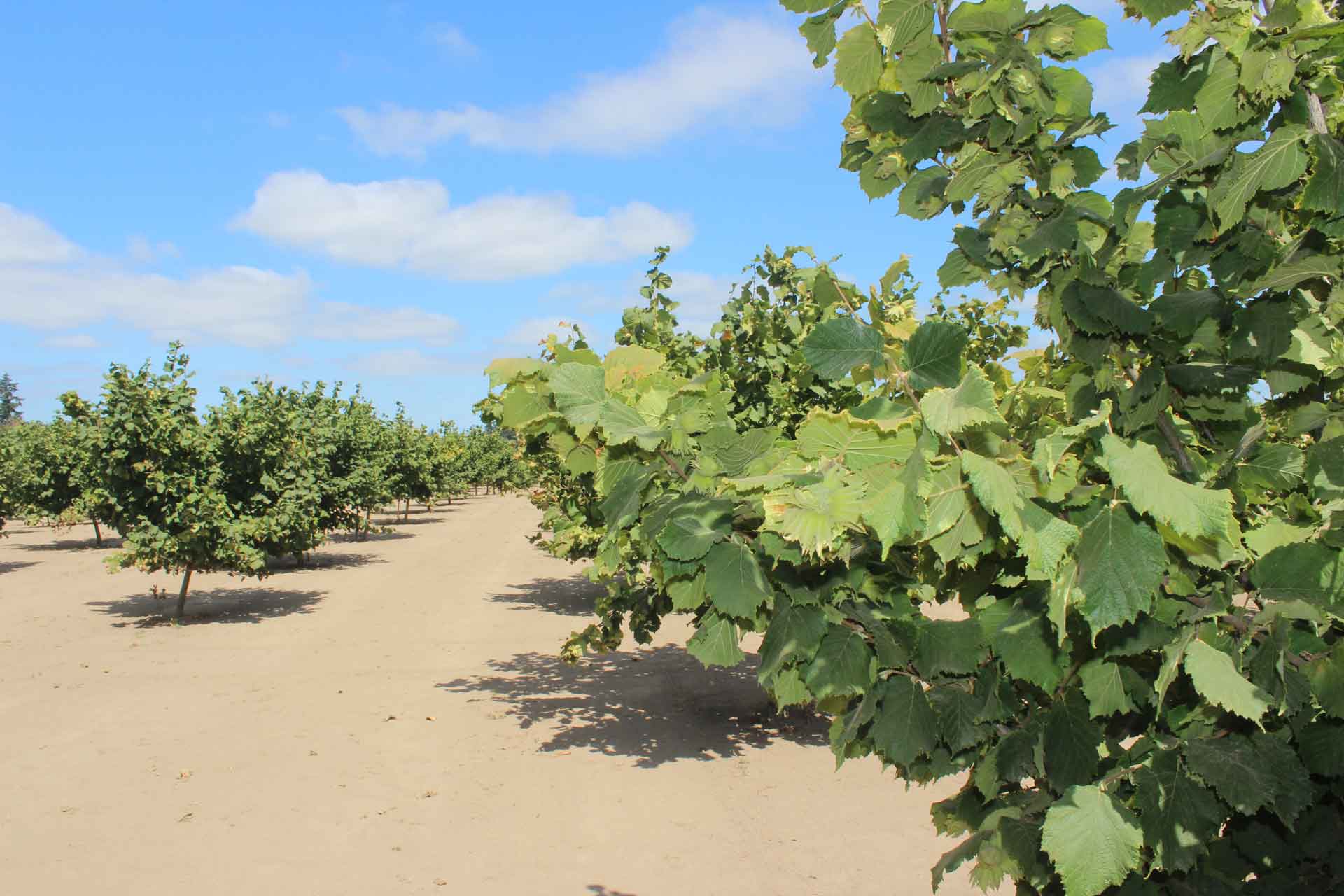Oregon hazelnut growers in Marion, Polk, Washington and Yamhill counties are at the heart of the recent boom in hazelnut production, representing more than 60 percent of hazelnut acres planted in the Willamette Valley.
This boom has also brought challenges, with soil erosion becoming a concern. Orchards are typically managed to eliminate vegetation on the floors to prevent competition with young trees for water and nutrients. In some areas, these bare floors are causing severe soil erosion, especially during the rainy winter months. Erosion impacts not only the health and productivity of the orchard, it also poses water quality issues when the excess sedimentation washes into streams.
To assist with this concern, the local water and soil conservation districts have teamed with United States Department of Agriculture (USDA) Natural Resources Conservation Services (NRCS), the Oregon Hazelnut Commission, Oregon Department of Agriculture and Oregon State University (OSU) to offer financial assistance to local hazelnut growers in combatting soil erosion by planting cover crops and perennial vegetation between tree rows. To help growers overcome the expense of establishing cover crops, 75 to 100 percent of the costs will be covered.
Funding is available through the USDA’s Environmental Quality Incentives Program. This funding initiative stems from work already being done by early adopters of permanent conservation cover in hazelnut orchards in the Willamette Valley including Ioka Farms in Marion County.
The cost share assistance will help hazelnut growers plant permanent vegetation or cover crops between rows, establish field border plantings, and place mulch in season erosion trouble spots. These activities will help keep orchard floor covered when vulnerable to winter erosion and will also increase the water holding capacity of the soils, increase organic matter and improve water quality.
OSU Extension is working with growers on cover crop trials to make better recommendations to growers on species selection and planting trees.
The financial assistance to growers will cover 75-100 percent of the costs according to USDA.
Conservation cover—from $68 to $91 per acre to establish permanent vegetation between rows.
- Cover crop—from $50 to $67 per acres for winter erosion prevention.
- Mulching—from $181-$242 per acre for winter erosion prevention.
- Herbaceous Weed Treatment—from $13 to $18 per acre for noxious weed control.
- Field Border—from $7890 to $1,053 per acre to better filter run off water at orchard edges.
- Critical area planting—from $463 to $618 per acre to repair gully erosion and establish vegetation to prevent erosion.
USDA service centers in Polk, Washington, Marion and Yamhill counties can assist with applications. In Marion County, contact Les Bachelor at 971-273-4816. In Polk County, contact Evelyn Conrad at 503-83703689. In Washington County, contact Jessica Wells at 503-207-7949. In Yamhill County, contact Thomas Hoskins at 503-376-7605.












